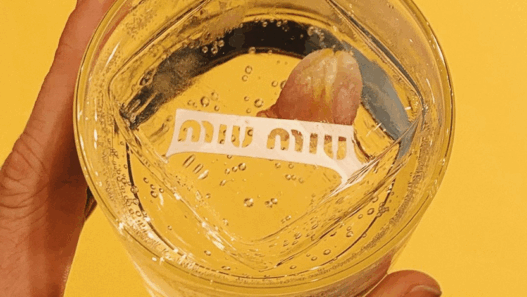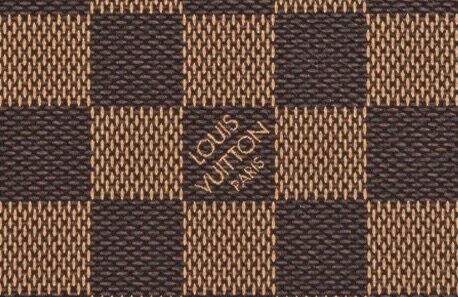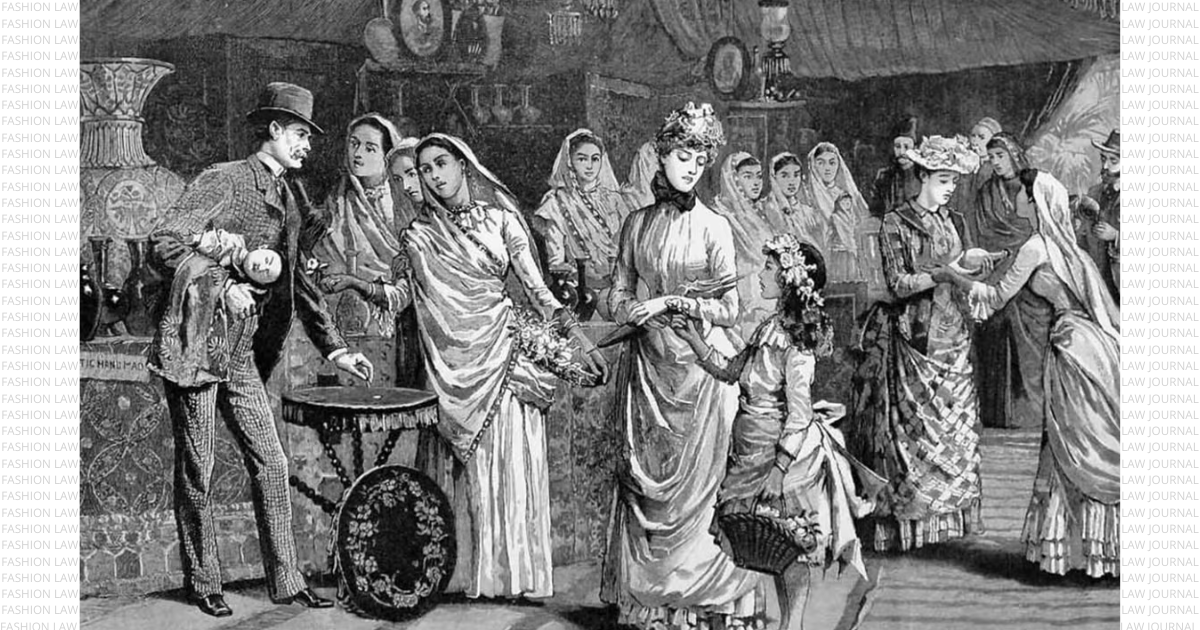INTRODUCTION
Indian Textiles and Apparel Sector
Garments represent more than just stitched fabrics on a mannequin- they are a reflection of our culture, heritage, self-expression and the hard work of the millions of people contributing towards this dynamic industry. The finished products that we adorn and wear today shape not just our wardrobes and fashion sense but also are deeply ingrained in the functioning of the economy of our nation. While textile refers to fibre-based materials that are produced by knitting, weaving and stitching yarns or fabrics, apparel includes clothing or footwear products, including shirts, pants, kurtas, suits, skirts, sneakers, and stilettoes, among others.[1]
The Indian textiles and garment manufacturing industry is one of the oldest industries, with its inception tracing its way back to the early nineteenth century,[2] and contributes as a frontrunner in the overall development of our economy. Presently, India is the second-largest producer of garments and textiles across the world, and the industry contributes 2.3% to the GDP of our national economy and 10.5% to exports.[3]
Being a labour-intensive industry, India enjoys a comparative advantage in terms of skilled manpower, technology, and cost of production from other major garment and textile-producing countries. Reports provide for a highly successful turnover for this industry, with the overall exports of readymade garments in Financial Year 25 [April-June] accounting for USD 2,244 Million.[4] This sector also significantly contributes to providing employment opportunities to both skilled and unskilled manpower and is viewed as a powerhouse of the Indian economy.
The Government of India [“GOI”] has undertaken several initiatives in terms of schemes, plans and fund- allocations to empower this industry in order to meet the country’s short and long-term developmental goals.
This article aims to analyse the growth and functioning of the Indian Textiles and Apparel sector from the lens of macroeconomics, discuss the relevant GOI initiatives for the enhancement of this industry, along with examining its potential to cater to innovation and progress for the overall development of India. The GOI is consistently working towards expanding the role and operations of the textile and apparel industry. The Government is encouraging farmers, MSMEs, weavers, exporters and small business owners to keep the Five F’s value chain running: “Farm to Fibre, Fibre to Factory, Factory to Fashion, and Fashion to Foreign”.[5]
ECONOMIC THREADS: THE MACROECONOMIC INFLUENCE IN THE TEXTILE AND APPAREL INDUSTRY
When viewed from a macroeconomic lens, there are various factors that impact the overall functioning of the Indian textile and apparel industry. A few of them are discussed below:
The nation’s economic growth and GDP significantly impact the textile and apparel industry as they can alter the demand for textile exports. With a higher growth rate, there can be a positive impact in terms of expectations for increased domestic demand and higher textile export rates. For instance, India’s GDP growth rate of 8.9% in the previous quarter has positively impacted this industry.[6] Additionally, higher disposable incomes in households also drive domestic consumption in this sector. India’s textile and apparel industry is constantly progressing, with overall exports projected to grow at a Compound Annual Growth Rate [“CAGR”] of 18.5% between 2016 – 2025E, reaching USD 185 Billion by 2025.[7]
The following illustration represents India’s economic growth in the textile and apparel industry over the years:

Inflation rates can significantly impact the functioning of the textile and apparel industry. Being labour-intensive, the Indian textile and apparel sector presently employs over 40 million people.[9] The present times have witnessed an increase in the cost of labour owing to changing market dynamics, which has negatively impacted this sector in India, rendering a disadvantage in terms of costs of labour and raw materials, employment and, to some extent, even exports.
An increase in labour and raw material costs leads to increased product prices, which may not be favourable for consumer consumption. Additionally, the wide market of imported products also contributes to the ongoing challenges. India follows fairly liberal import policies, with low duties and flexible regulatory compliances for imported garments, allowing for a plethora of variants available from garment-producing giants across the world, like China, Bangladesh, Thailand, Vietnam, USA, etc., in the Indian markets at affordable prices.[10]
The volatility of raw material prices, like that of cotton, wool, yarn, synthetic fibres, polyester, etc., directly impacts the textile and garment manufacturing industry in terms of product pricing, supply chain, and profit margins, among others. For instance, an unprecedented price increase of yarns and other fabrics in the year 2021 severely impacted the selling prices of clothing factories, which altered consumer sentiment and preferences. It is important to note that this process involves the interplay of several factors and market forces, with some of them being as unprecedented as climate change risks, impacting the production cycle of raw materials and finished goods.[11] Further, the composition of the Indian raw material industry comprises natural and man-made fibres [“MMF”], with differing costs of production and market values. With natural fibres projected to reach USD 195 Billion by 2025,[12] they tend to represent the larger segment in the raw material breakdown in the Indian textile and apparel sector.[13]
The following illustration graph depicts the CAGR based on the breakup of raw materials:

The Indian textile and apparel sector is sensitive to fluctuations in exchange rates, which have the potential to impact the competitiveness of textile exports.[15] For instance, over the past few months, the appreciation of the Indian National Rupee has gained a fifteen per cent value relative to the US Dollar, which impacts the export-driven textile and apparel industry of India.[16] On the other hand, weaker domestic currencies can make exports more affordable for foreign buyers, which may positively impact sales.
Foreign Direct Investments [“FDI”] inflows can majorly impact the overall export cycle and performance of the textile and apparel industry. Increased FDI rates reflect positively on investor confidence, operations and scope for expansion for the industry. India has currently witnessed an increased FDI inflow of 15% into this industry.[17]
During the Financial Years 2010-2016, the FDI in this sector grew at a CAGR of 14.6% and has been on the rise since then.

With the advent of digitalisation and technological advancements, the apparel sector has made its way into the virtual realm, with an ever-rising demand for an e-commerce and online consumer experience. With the infusion of Artificial Intelligence [“AI”] and advanced apparatus for the production of garments, the textile and apparel industry has immensely benefitted in terms of improved efficiency and product quality. Further, recent developments like Smart Designs or virtual try-on features have further increased the demand for exports from this sector- India recently witnessed a 12% increase in textile exports owing to technological advancements.[19]
Favourable government policies and a stable political regime significantly contribute to the overall operations of the textile and apparel sector and determine how well it functions at a macroeconomic level. The present political regime has provided a conducive platform for this industry to flourish and has taken several initiatives to support and foster innovation, progress and growth, contributing to the successful performance of this industry, both at the domestic and global fora. A few of these GOI initiatives are briefly discussed in the subsequent section.
GOVERNMENT INITIATIVES AND POLICY MEASURES
The Ministry of Textiles organised an International Conference titled ‘Viksit Bharat-Technical Textiles for Sustainable Growth & Development’ in September 2024 to deliberate on the growth of the textile and garment manufacturing industry in India. The main areas of focus were employment, innovation, economic and social impact and the overall direction of the industry.[20] The GOI, along with the Ministry of Textiles, has consistently been working towards the empowerment of the textile and apparel sector to meet India’s developmental goals. Following are a few government initiatives and policy measures concerning this industry.
The Textile Ministry aims to secure a 20% share of global trade by 2024-25 and contribute to exports amounting to USD 300 Billion, in pursuance of which it launched the Vision 2024-25 programme- a 10-point strategy focusing on strengthening the operations and efficiency of the textile and apparel sector in India.[21] Some measures in this strategy include achieving scale across the value chain, attracting more foreign investments into the sector, improving skills and product quality, reforming labour laws, diversifying exports, and structural transformation with value additions, among others.[22]
The Production Linked Incentive [“PLI”] scheme aims to promote the production of MMF apparel in the global trade, attract fresh investment of approximately INR 19,000 Crores and generate around 7.5 Lakh new employment opportunities.[23] The scheme also encourages the participation of women in the textile and apparel industry. Leveraging economics of scale, the PLI scheme envisions the emergence of Indian companies and textile brands as world leaders in the industry.[24]
With a target period of four years [2020-21 – 2023-24], the National Technical Textile Mission [“NTTM”] primarily focuses on four components: Research, Innovation and Development, Promotion and Market Development, Export Promotion and Education, Training and Skill Development.[25] The vision of the NTTM is to promote the usage of technical textiles in several national flagship missions, strategic sectors and programs, while enhancing the skill sets of the involved workforce.
The GOI has reflected on its commitment to promote the Indian textile and apparel sector and boost its operations and efficiency by way of revising its budget allocation from last year. This year’s budget witnessed an increased allocation from the previous year’s INR 3,443.09 Crores to INR 4,417.03 Crores in FY2024-25. The following chart elucidates the detailed revised budget allocation for the Ministry of Textiles.

GREEN FASHION AND SUSTAINABILITY MEASURES
With the increasing concerns for environmental protection and climate change risks, the textile and apparel sector has shifted its focus towards more sustainable and eco-friendly practices. Presently, the textile and apparel industry actively contributes to the production of hazardous elements, pollutants, toxins, etc. For instance, the utilisation and employment of a variety of colours, synthetic blends and other handling materials has contributed to around 17-20% of the present water pollution.[27]
Sustainable measures, apart from nurturing and preserving the environment, also impact the involved stakeholders at a macroeconomic level. Switching to organic models of production and manufacturing, embracing water conservation and incorporating eco-friendly technological advancements help boost production cycles, employment opportunities, offer flexible product and raw material costs, and, in turn, increase consumer demand.
The Indian textile and apparel sector is presently redirecting its focus towards the empowerment of the 3 E’s- Equity, Environment and Economics.[28]
The GOI has taken several measures to switch to greener and more sustainable practices in this sector, including the PM-MITRA Scheme [Mega Integrated Textile Region and Apparel] that envisions inaugurating Mega Investment Textile Parks to integrate world-class industrial infrastructure and technology to attract higher FDI and local investments in this sector. This scheme aims to meet the goals of SDG 9: “Build resilient infrastructure, promote sustainable industrialization and foster innovation”.[29] The Ministry of Textiles also launched ‘Project SU.RE.’ – Sustainable Resolution in 2019 to pave the way for a sustainable environment for the textile and fashion industry. This project aims to integrate SDGs into the working of this industry in order to achieve India’s long-term environmental, economic, social and corporate governance goals.[30]
Therefore, the GOI and involved stakeholders have consistently reflected on their dedication to moving towards a more environmentally friendly approach towards fashion and embracing sustainable measures for the textile and apparel sector in India.
VIEWING TECHNOLOGICAL ADVANCEMENTS IN THE TEXTILE AND APPAREL SECTOR FROM A MACROECONOMIC LENS
The world of fashion has witnessed a remarkable spike in technological advancements. With the textile and apparel industry consistently adopting and fitting into the virtual realm, most of the traditional aspects of textile designing, manufacturing and marketing are now transforming with the advent of digitalisation and technological advancements. With the ease of technology, I can virtually try on a Louis Vuitton scarf and get assisted by a virtual sales assistant present on their website from the comfort of my home. Several apparel brands also allow consumers to virtually try on multiple colour palettes and product designs before making a final purchase.
The Indian textile and apparel sector is now successfully incorporating various technological advancements, including smart fabrics and wearable technologies, advanced textile manufacturing techniques, 3D Printing and digital design, incorporation of Augmented and Virtual Realities [AR and VR], among others.[31]
Apart from boosting the efficiency and demand for this sector, the technological advancements also act as a boon to the overall national economy. These developments actively contribute to increasing employment opportunities, attracting foreign investments, enhancing the skill sets of the workforce and increasing the global demand and exports of Indian textiles and apparel, all of which positively impact the GDP and economic growth of the nation in the long run.
CONCLUSION
Upon analysing the scope and contributions of the Textile and Apparel industry to the overall development and economic growth of the country, it can be concluded that it is one of the most strategic sectors for innovation and investment and caters to the most fundamental needs of all. Being one of the oldest industries in the world, textiles and apparel continue to adorn our lives by fulfilling our most essential requirements and providing space for creativity and self-expression.
The sector aligns with the developmental goals and the vision of India in establishing itself as a developed nation by the year 2047, and with the initiatives and policy measures being implemented by the Indian Government and other stakeholders, this mission does not seem to be far-fetched.
While there may be some considerations and shortcomings in the operations of the industry, which is sensitive to climate change risks, environmental concerns, volatility of currency and exchange rates, inflation, and costs of raw materials, among others, India’s textile and apparel sector has come a long way in cementing itself as a world leader and a frontrunner to India’s economic growth and development.
Author’s Bio :

Vanshika Tuteja is a third-year law student at the National Law University, Jodhpur. Passionate about Fashion Law and Intellectual Property Rights, she actively contributes through writing and research in these fields. Vanshika serves as a Student Editor at the Fashion Law Journal, where she engages with various facets of the intersection of Law and the Fashion Industry.
[1] Indian Textile and Apparel Market Report by Raw Material (Natural Fibres, Man-Made Fibres), Application (Clothing Textiles, Technical Textiles, Fashion Textiles, Home-Décor Textiles, and Other Textiles), Product Type (Yarn, Fabric, Fibre, and Others), and State 2024-2032, Imarc, last visited 12 Oct 2024 < https://www.imarcgroup.com/indian-textiles-apparel-market>.
[2] Madhu Sharma, Indian History of Textile and Apparel Sector, 7 Int’l J. Mod. Trends Sci. & Tech. 360 (2021).
[3] Indian Textile and Apparel Industry Analysis, Ibef, last accessed 12 Oct 2024 < https://www.ibef.org/industry/indian-textiles-and-apparel-industry-analysis-presentation>.
[4] Id.
[5] Government working to expand textile sector’s role in Viksit Bharat: PM Narendra Modi, The Hindu BusinessLine, last accessed 13 Oct 2024 < https://www.thehindubusinessline.com/economy/government-working-to-expand-textile-sectors-role-in-viksit-bharat-pm/article67888620.ece>.
[6] The Significance of Textile Exports in the Indian Economy, The Yarn Bazaar, last accessed 13 Oct 2024 < https://theyarnbazaar.com/blogs/significance-of-textile-exports-in-indian-economy.html>.
[7] Textile Sector in India, Nivesh Mitra Government of UP, last accessed 13 Oct 2024 < https://www.google.com/search?client=safari&rls=en&q=nivesh+mitra+up+textiles&ie=UTF-8&oe=UTF-8>.
[8] Image Source < https://niveshmitra.up.nic.in/Textiles.aspx>.
[9]Inflation curbs the Indian Textile Industry, Fibre 2 Fashion, last accessed 13 Oct 2024 < https://www.fibre2fashion.com/industry-article/3487/inflation-curbs-the-indian-textile-industry#:~:text=Inflation%20is%20a%20challenge%20to,of%20imported%20goods%20specifically%20apparels.>.
[10] Supra Note 10.
[11] Textile-Clothing, Coface, last accessed 13 Oct 2024 < https://www.coface.com/news-economy-and-insights/business-risk-dashboard/sector-risk-files/textile-clothing>.
[12] Mini Tejaswi, Growing demand for natural fibres opens up huge farming opportunities in India, The Hindu, last accessed 13 Oct 2024 < https://www.thehindu.com/business/growing-demand-for-natural-fibres-opens-up-huge-farming-opportunities-in-india-mayank-tiwari-of-reshamandi/article65671554.ece>.
[13] Supra Note 1.
[14] Image Source < https://www.imarcgroup.com/indian-textiles-apparel-market>.
[15] Supra Note 7.
[16] Supra Note 10.
[17] Supra Note 7.
[18] Image Source < https://niveshmitra.up.nic.in/Textiles.aspx>.
[19] Supra Note 7.
[20] Ministry of Textiles organizes ‘Viksit Bharat – Technical Textiles for Sustainable Growth & Development’ conference under the 100-day programme, Ministry of Textiles, last accessed 14 Oct 2024 < https://pib.gov.in/PressReleasePage.aspx?PRID=2058715#:~:text=The%20Minister%20stated%20that%20the,Apparel%20and%20Technical%20Textiles%2C%20etc.>.
[21] Vision, Strategy and Action Plan for Indian Textile and Apparel Sector, Ministry of Textiles < https://texmin.nic.in/sites/default/files/Vision%20Strategy%20Action%20Plan%20for%20Indian%20Textile%20Sector-July15.pdf>.
[22] Id.
[23] Schemes Launched by the Government in Textile Sector for Employment Generation, Press Information Bureau, Government of India, last accessed 14 Oct 2024 < https://pib.gov.in/Pressreleaseshare.aspx?PRID=1808759>.
[24] Production Linked Incentive (PLI) Scheme for Textiles, Press Information Bureau, last accessed 14 Oct 2024 < https://www.pib.gov.in/PressReleasePage.aspx?PRID=1753118>.
[25] About Technical Textiles, Ministry of Textiles, last accessed 14 Oct 2024 < https://nttm.texmin.gov.in/PI/AboutMission>.
[26] Image Source < https://textileinsights.in/indian-union-budget-2024-key-initiatives-to-boost-textile-leather-and-msme-sectors/>.
[27] India Goes Green: Textile Industry, Invest India, last accessed 14 Oct 2024 < https://www.investindia.gov.in/siru/india-goes-green-textile-industry>.
[28] Id.
[29] PM Mega Integrated Textile Region and Apparel (PM MITRA), Government of India, last accessed 14 Oct 2024 < https://www.india.gov.in/spotlight/pm-mega-integrated-textile-region-and-apparel-pm-mitra>.
[30] Supra Note 28.
[31] Latest Innovations & Technology in the Indian Textile Industry, Iff, last accessed 14 Oct 2024 < https://www.imagesbof.in/latest-innovations-technology-in-the-indian-textile-industry/#:~:text=Indian%20textile%20manufacturers%20are%20exploring,as%20needed%20without%20excess%20inventory.>.

















